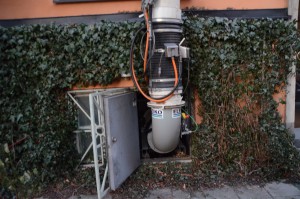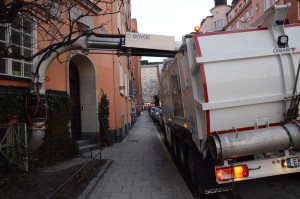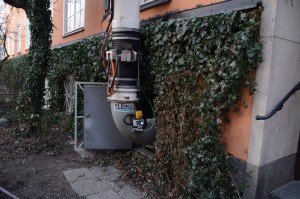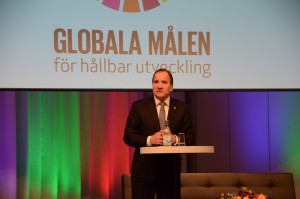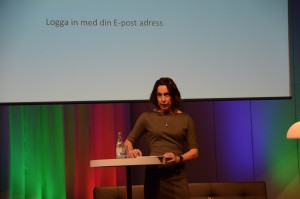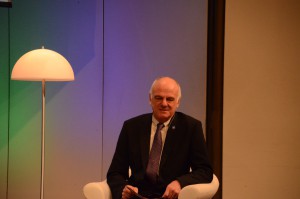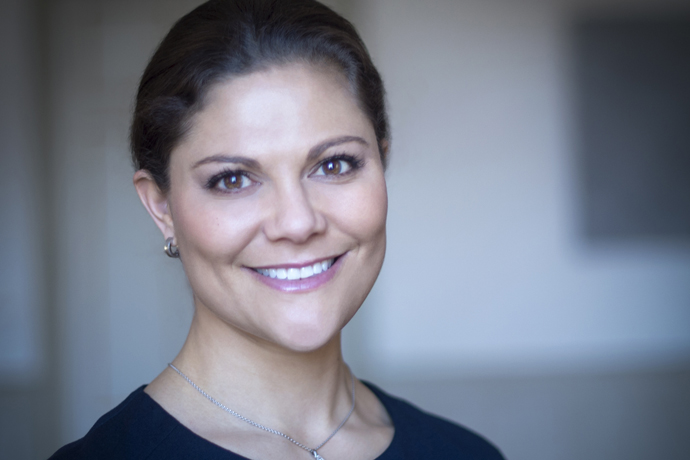Your Royal Highness,
Dr Nabarro,
Friends,
A very warm welcome to this launch of Sweden’s action to implement the 2030 Agenda. It is particularly exciting to see so many here from so many sectors of society.
Because if there’s one thing I know, it is that we get results when we work together – the business sector, trade unions, civil society,
researchers, politicians and civil servants at all levels.
One of the success factors for the Global Goals and the 2030 Agenda
is that so many have been involved in developing them.
This gives us strength as we move forward and begin to implement the goals.
Thank you for being here ready to take on this task. I very much look forward to hearing your thoughts and ideas about the work that lies ahead of us.
Friends,
“A quiet life on the peak of a volcano is illusory. In today’s world everything concerns everyone.”
These were the words of Václav Havel, formulated when the Berlin Wall fell and the world was in upheaval. Gone was the stalemate of the Cold War and a new era of global cooperation began. It was a time when world leaders and countries came face to face with the completely new challenges and new opportunities that globalisation presented.
The decade that followed was a time when the major future global issues were discussed at a string of world conferences, not least the Earth Summit in Rio, the Conference on Women in Beijing, the World Summit for Social Development in Copenhagen and the Conference on Population and Development in Cairo.
And it was those efforts that resulted in the Millennium Development Goals.
And I know that at the turn of the millennium, there weren’t many who believed that those goals could be achieved.
We were used to the United Nations setting important goals and visions but we were also used to careless implementation of the decisions that were taken.
But the prophets of doom were wrong. We have proved that it is possible to change and improve the world. When there is willingness,
when global leadership is strong and when the opportunities globalisation offers are seized.
At the end of last year, the American magazine The Atlantic wrote that 2015 was “the best year in history for the average human being”.
And much of what was reported there relates to the UN Millennium Development Goals. Poverty was halved – five years ahead of the deadline. Today, nine out of ten girls and boys around the world go to school. Maternal mortality has fallen. Child mortality has fallen.
Billions of people have gained access to clean water. A global middle class is emerging where every second person has access to a mobile phone.
Friends, the world is not worse. It’s better.
But we live in paradoxical times.
Alongside positive developments we see deepening wars and conflicts,
terrorist attacks, an ongoing refugee crisis and serious environmental and climate threats.This adds to our unease.
And despite the huge progress that has been made 800 million people
are still living in extreme poverty. Ninety million children around the world are still suffering from malnutrition. Women across the globe still have less power, and poorer access to the labour market and education.
A lot of work remains to be done.
It was with this perspective – of challenges and opportunities – that the world’s leaders gathered in New York in September last year and adopted the 2030 Agenda and its 17 global goals.
And it was recognising our common destiny that we gathered in December and agreed on a new binding climate agreement.
UN Secretary-General Ban Ki-moon has expressed it well. “We are the first generation that can eradicate poverty. And the last that can put an end to climate change.”
And the work is not to be done by someone else, somewhere else. It has to be done by all of us together. The goals make great demands on all countries and all actors.It is my ambition to see Sweden take the lead.
And there are two reasons for this.
1. It is morally right.
We have a responsibility towards others, and not just ourselves here and now. We have a responsibility towards people all over the world, but also towards future generations.
2. But it is also economically smart.
I want Swedish companies to be the ones to develop the new technology and solutions that the world is crying out for to reduce carbon emissions. Our country will benefit from being at the forefront of climate adaptation.
Sweden’s strength lies in being an egalitarian and gender equal society,
which not despite, but because of its solidarity and tolerance, is rich, modern and a world development leader. This is the Sweden we are striving to build. This is the Sweden we believe in.
And I know that there are plenty of ideas and solutions in Sweden.
Just over a year ago, I met Mehrdad Mahdjoubi when he was named Technologist of the Year. I’m sure you have heard of him. He has developed the world’s most advanced and efficient shower system, saving 90 per cent water and 80 per cent energy, and the shower water is cleaner than ordinary hot tap water. In addition, he has succeeded in turning his innovation into a business idea and set up a company called Orbital Systems. It is now ready for a global launch.
Many Swedish companies are well ahead. Scania and Volvo, working tenaciously for a low-emission green transport sector. H&M, one of the world’s largest users of organic cotton and working for workers’ rights.
There are more examples: Ericsson’s digital solutions, ABB’s development of smart grids and IKEA’s goal to produce its own renewable energy and make it easy for us ordinary people to live greener lives with LED lights and solar panels.
I could go on because this is what I think is really exciting – when jobs are created through innovations that are turned into business ideas and reach new markets.
Sustainable business models give Swedish companies a competitive edge. This is Sweden’s future. This makes a difference – in Sweden and in the world. And this creates jobs and growth.
Let me give you another example of leadership. Malmö – a municipality that has made the global goals its own. You are showing the way both on innovative environmental efforts and proposals to reduce health inequalities. And there are many more municipalities making important investments in sustainable development – Karlstad, Örebro, Lomma, Östersund and Borås to name but a few.
We have to take advantage of all the available knowledge and experience.
Three government ministers have particular responsibility for implementation. Minister for Public Administration Ardalan Shekarabi,
Minister for International Development Cooperation Isabella Lövin and Minister for Strategic Development Kristina Persson.
The Government will soon appoint a national delegation to facilitate and stimulate implementation. It will be tasked with producing a national action plan.
We will be assisted by a large number of government agencies that will contribute their knowledge, such as SCB, which will help to develop
indicators for the follow-up. This will make our work and the results concrete.
But what is most important is all of you here today, the breadth that you represent and the engagement you bring. Your knowledge is essential. Your work is crucial. We will do this together.
And what a historic opportunity to be a part of this process and make a difference.
We have a long to-do list. Let’s get started.
Once again, a warm welcome to you all.


